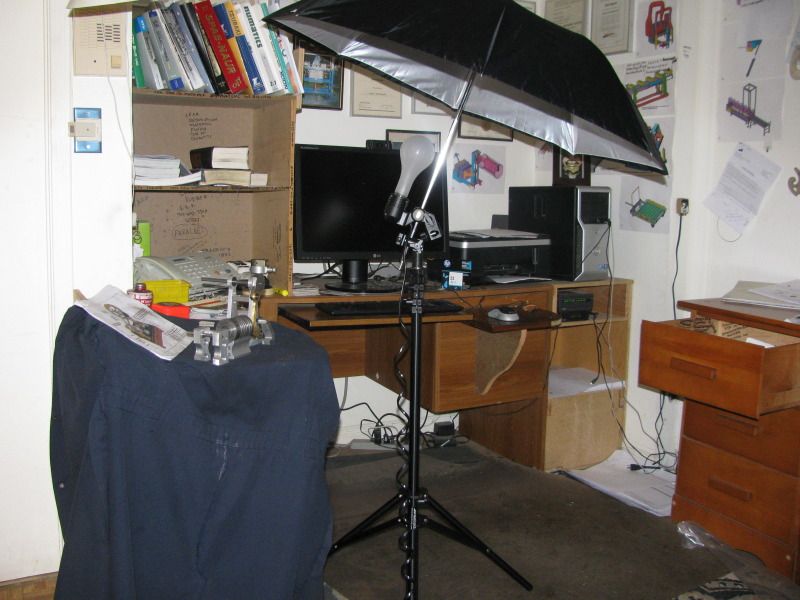I have had an ongoing problem taking good enough pictures of my projects to post. If I use the flash on the camera, I get "wash outs" in the center of the pictures from the reflection of the camera flash. If I don't use the flash, the pictures are too dark to see. I can't always drag my subject material outside to photograph it in natural light. As a consequence of this, I have to take 7 or 8 pictures of the same thing in order to get one good enough to post. Today I finally got tired of this and visited a local camera shop. When I explained my problem, they immediately tried to sell me a white fabric "Light Box" to take my pictures in. I explained to them that my projects are frequently covered in oil and/or machining chips, and that I didn't think the white fabric light box would live very long. They then suggested a "Diffuse light stand and light reflecting parasol." This sold for a total of $110 including taxes, so I brought it home to try. It seems to make a remarkable difference, and I don't have to use the camera flash at all. I will have to experiment with this rig, but I expect the quality of pictures I post to improve.-----Brian






